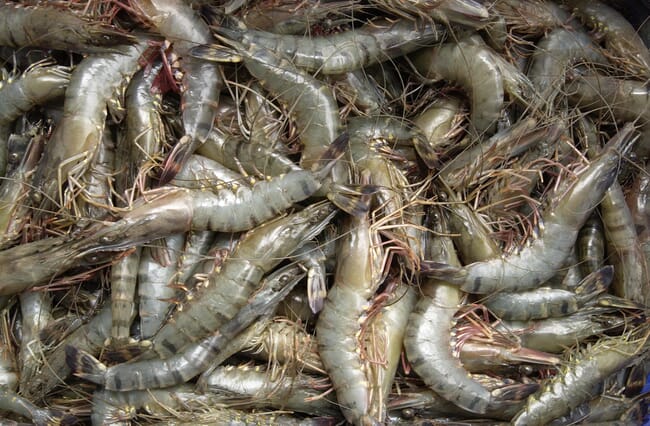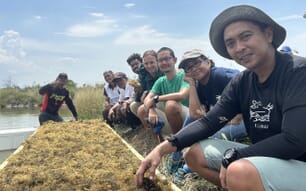At the Prevention and control of disease on fishery products in 2022 conference, organised by the Ministry of Agriculture, Vietnam’s Department of Animal Health presented a report that outlined progress on biosecurity and disease prevention measures for its aquaculture sector.

© Trong Linh
The 7 May presentation showed that Vietnam’s disease-affected aquaculture area in 2021 measured 5,600 hectares, a 33 percent decrease over the same period in 2020. The report found that dangerous aquatic diseases were largely under control, while producers were successfully preventing new diseases from entering the country.
However, the report noted that from the beginning of 2022, the aquaculture areas impacted by diseases reached approximately 1,200 hectares, a jump of nearly 14 percent compared to the same period in 2021. The affected area is mainly dominated by shrimp farms (1,000 hectares). White spot disease and acute hepatopancreatic necrosis disease (AHPND) were the most commonly reported diseases. The report also noted that over 400 aquaculture rafts and net ponds in the An Giang, Dong Thap and Ben Tre regions suffered some common diseases.
In the first four months of 2022, 9,300 hectares of super-intensive, intensive and extensive shrimp farming has been damaged by disease. There are also cases of abnormal death of crabs occurring in the districts of Ngoc Hien, Nam Can, Dam Doi, Cai Nuoc and Phu Tan at the beginning of the year.

"The Covid-19 epidemic had severely affected all fields in 2021 including economy, life, culture and tourism. The Food and Agriculture Organisation of the United Nations (FAO) had also warned that there would be a large number of people having to suffer food shortages in the near future. In the case of Vietnam, we were unable to import many kinds of materials for animal feed production, veterinary medicine, aquaculture inputs and fertiliser production, causing serious problems to our country’s agroproduction," said Deputy Minister of Agriculture Phung Duc Tien commented.
Despite these setbacks, Vietnam’s aquaculture sector remains on a growth trajectory. Total seafood production during the first four months of 2022 reached an estimated 2.6 million tonnes, a 2.2 increase over the same period in 2021. Aquaculture has output reached 1.37 million tonnes and exports are expected to remain strong through 2022.
“[Regions like] Ca Mau play a very important role in our country's agriculture, especially in the field of fishery. Ca Mau is also considered the ‘fishery product vault’ of the Mekong Delta region with its fishing output continuously increasing over the years. It is therefore extremely important to promote disease prevention and control measures as well as invest in the seafood production chain of the province,” said Deputy Minister of Agriculture Phung Duc Tien.




